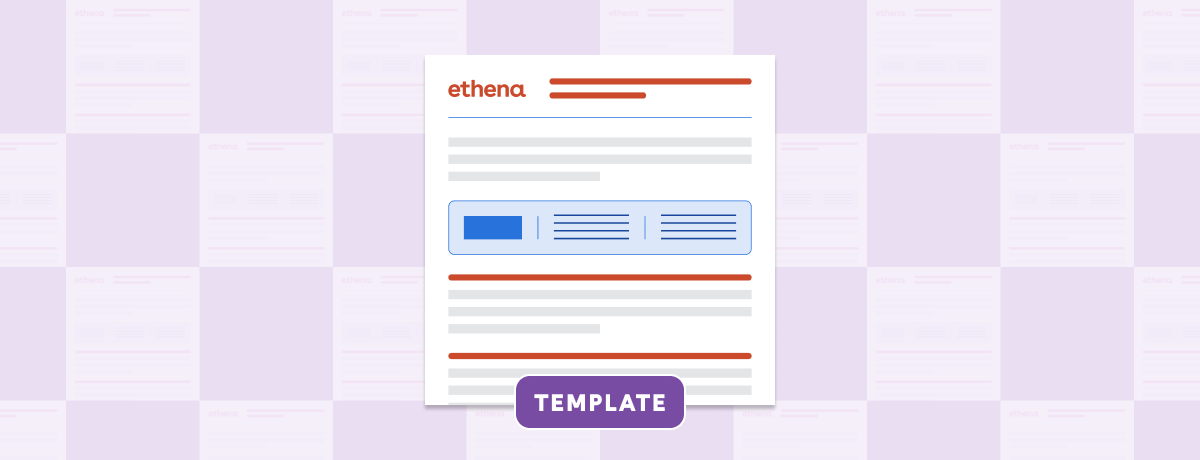Want the full Camp Ethena experience? Head to the Camper Handbook.
Human resources can feel a lot like whitewater rafting.
If you're not seeing the connection, hear us out.
In the same way that HR professionals are often up to our eyeballs in unpredictable and challenging scenarios (employee relations, organizational changes, and new policy implementation, to name a few), whitewater rafters navigate through chaotic waters, requiring quick decision-making and adaptability to changing currents and obstacles. At any time, they must be prepared for sudden shifts in the river’s flow; like rapids, rocks, and other hazards.
Sound familiar yet?
In this article, we're going to cover five uncomfortable situations HR folks are guaranteed to encounter at some point in their career, and offer tips on how to handle them like a pro. So grab your paddles, your life jacket, your kayak, and your other safety equipment — and let's get to it.
1. Employee terminations
Employee terminations are an often icky (but let’s face it: inevitable) part of the HR role.
Whether due to performance issues, restructuring, or other reasons, these decisions are tough for both the departing employee and the HR person managing the process. When it comes to navigating these delicate conversations, it’s critical to prioritize respect and privacy to uphold the dignity of the departing employee, while also safeguarding your company’s reputation.
Our step-by-step employee termination checklist for instructions on how to handle these situations in a way that prioritizes the best interests for all involved. Here's a preview of what's covered at each stage:
- Before the meeting: prep the manager; coordinate with other teams; compile paperwork
- During the meeting: prioritize privacy, keep it brief, do an EQ check, run through logistics
- After the meeting: remove access and permissions, collect company property, process final pay and benefits, record and maintain all documentation
2. Harassment and/or discrimination complaints
Anyone in HR knows the stomach-dropping feeling that comes with an employee alleging wrongdoing in the workplace. Whether it’s a discrimination claim, harassment, or retaliation, it’s critical that you know the right steps to take when an employee flags a workplace concern, everything from ensuring the employee feels heard to determining what to do with the information. Among others, this includes:
- Acknowledging receipt of the complaint
- Initiating the investigation
- Documenting the investigation
- Taking interim measures (such as temporary reassignments or leave)
Documenting the harassment and discrimination claim is your first step towards ensuring compliance with legal requirements, providing a safe working environment, and handling complaints effectively. Download our comprehensive harassment claim checklist and refer to it when addressing harassment and discrimination claims in the workplace.
3. Workplace investigations
Leading an employee investigation is never fun. It can be stressful, shocking, and emotionally taxing on all sides. To make matters worse, most HR professionals get thrown headfirst into their first employee investigation without any formal training around what to say, what to ask, and how to do it all while navigating the tricky balance of empathy, neutrality, and data collection. Here are some quick tips:
- Prepare thoroughly: Gather initial information about the complaint or allegation. Understand who is involved, what the issues are, and the context.
- Maintain confidentiality: Ensure that all information related to the investigation is kept confidential. Limit the dissemination of details to only those who need to know.
- Plan the investigation: Outline the scope, objectives, and timeline of the investigation. Identify key witnesses and documents that need to be reviewed.
- Conduct interviews: Develop a list of open-ended questions that will help gather relevant information without leading the interviewee.
- Gather and analyze evidence: Gather relevant documents, emails, and any other evidence that can support the investigation.
- Maintain impartiality: Remain neutral and unbiased throughout the investigation. Avoid making premature judgments or showing favoritism.
- Keep records: Keep meticulous records of all steps taken during the investigation, including interviews, evidence collected, and any decisions made.
- Communicate findings: Once the investigation is complete, communicate the findings to the relevant parties, including management and, where appropriate, the individuals involved.
- Take appropriate action: Ensure that any recommendations or actions resulting from the investigation are implemented promptly and effectively.
Conducting a thorough workplace investigation involves several critical steps, from planning and evidence gathering to interviewing witnesses and reporting findings. Grab our detailed guide on how to conduct a workplace investigation (co-written with Chantelle Egan!)
4. Reasonable accommodations
Reasonable accommodations are another aspect of HR that can be pretty dang tricky.
Not only do they entail time-intensive admin work (that can vary from state to state), they also tend to be laden with legally-nuanced and complex circumstances. Like, say… an ongoing performance issue. Or having to collect some seriously personal medical information. Kinda scary, right?
When an employee requests a reasonable accommodation, we must follow a structured and empathetic approach to ensure the request is handled appropriately (and is in compliance with legal requirements). Here's a step-by-step guide on how to handle reasonable accommodation requests in the workplace:
- Acknowledge the request: Acknowledge the employee’s request as soon as possible. This shows that the request is taken seriously and is being addressed promptly.
- Start collaborating: Set up a private meeting with the employee to discuss the details of their accommodation request.
- Gather necessary info: Ask questions to understand the nature of the disability and the exact accommodation being requested.
- Evaluate the request: Assess the request based on the individual’s needs and job requirements. Consider whether the accommodation will enable the employee to perform the essential functions of their job.
- Explore alternative accommodations: Work together with the employee to identify possible accommodations. If the initial request is not feasible, explore alternative solutions that could meet the employee’s needs.
- Implement the accommodation: Once an accommodation is agreed upon, implement it promptly. Ensure that all necessary arrangements and adjustments are made to facilitate the accommodation. Don't forget to document!
- Monitor and review: Schedule regular follow-up meetings with the employee to ensure that the accommodation is effective and to address any issues or concerns.
- Educate and train staff: Provide training for managers and supervisors on how to handle accommodation requests and support employees with disabilities.
- Make sure you're compliant: Ensure that the handling of the accommodation request complies with relevant laws, namely the Americans with Disabilities Act (ADA) in the U.S., and follows the organization’s policies.
5. Employee relations
Employee relations can be particularly tricky for HR professionals due to the intersection of various factors that impact the workplace environment. Here are some examples:
- Diverse perspectives and interests: Employees come from diverse backgrounds and have different expectations, needs, and communication styles. Balancing these diverse perspectives can be challenging.
- Emotional complexity: Employee relations often involve sensitive issues such as harassment, discrimination, and personal conflicts. Handling these matters with empathy and discretion is essential, but tough.
- Communication challenges: Providing constructive feedback and resolving conflicts require strong interpersonal skills and the ability to mediate disputes impartially.
- Organizational dynamics: HR often deals with the impact of organizational changes, such as mergers, restructures, and layoffs, which can create uncertainty and anxiety among employees.
- Trust and credibility: HR’s credibility can be undermined if employees feel their concerns are not being addressed adequately or if there is inconsistency in how policies are applied.
Given these complexities, HR professionals need to be skilled in areas like communication, conflict resolution, legal compliance, and emotional intelligence to effectively manage employee relations and support a positive and productive work environment.










